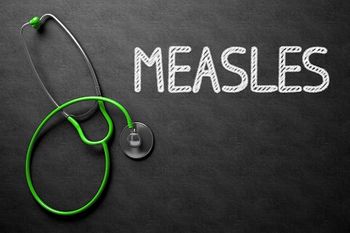
Identifying Risks for Mortality Among Nursing Home Residents with COVID-19
Increased age, male sex and underlying health conditions including diabetes and kidney disease were associated with a higher risk of all-cause mortality among nursing home patients with COVID-19, a new study found.
The risk of dying for nursing home residents with COVID-19 was higher among those with increased age, male sex and comorbidities such as diabetes and chronic kidney disease, a new study found.
The study, published in
“As nursing home residents are older, have multiple chronic illnesses, and have substantial levels of cognitive and physical impairment, it is not surprising that the mortality rate in our population was substantially higher than in the general population with COVID-19,” the study authors wrote.
Led by Orestis Panagiotou, MD, PhD, assistant professor of health services, policy and practice at Brown University School of Public Health, the study found a 30-day all-cause mortality rate of 21% among U.S. nursing home residents with COVID-19.
Among the study participants, 61% (3185) were women, the median age was 79 and 71% were White (3741). Odds of death increased with age, with those 80-84 years old 1.46 times more likely to die than those 75-79, those 85-89 years old were 1.59 times more likely to die and those 90 and older were 2.14 times more likely to die.
“The strongest factors associated with all-cause mortality in our sample were advanced age, symptoms at presentation, certain comorbidities, and impaired physical and cognitive function,” the study authors wrote.
According to the study, risk factors associated with increased mortality included:
Diabetes (OR, 1.21 [95% CI, 1.05-1.40])
Chronic kidney disease (OR, 1.33 [95%, 1.11-1.61])
Fever (OR, 1.66 [95% CI, 1.41-1.96])
Shortness of breath (OR, 2.52 [95% CI, 2.00-3.16])
Tachycardia (OR, 1.31 [95% CI, 1.04-1.64])
Hypoxia (OR, 2.05 [95% CI, 1.68-2.50])
The risk of death was lower among women than men (odds ratio [OR], 0.69 [95% CI, 0.60-0.80]). Odds of death rose by 2.09 times for nursing home residents with moderate cognitive impairment and 2.79 times for those with severe cognitive impairment. Among those with physical impairment, the risk of death was 1.49 times higher for moderate and 1.64 times higher for severe impairment.
No significant association was found between chronic conditions including chronic obstructive pulmonary disease, coronary artery disease, heart failure, and hypertension and increased mortality.
“Although the association of frailty with mortality outcomes among patients with COVID-19 has been demonstrated in studies of hospitalized or community-based older adults, our findings add an illustration of how different components of frailty are associated with mortality risk in an already vulnerable population of nursing home residents,” the study authors wrote.
People living in nursing homes accounted for less than 5% of infections in the United States but more than 40% of COVID-19-related deaths, Marlon Juliano Romero Aliberti, MD, PhD, and Thiago Junqueira Avelino-Silva, MD, PhD, wrote in an
They said the study offers predictors of death that are easily accessible and is an example of how to make better use of clinical notes.
“Health professionals should use this information to support conversations with patients and their families about goals of care (ie, advanced care planning),” they wrote. “Such information can also help them when they are required to make quick decisions on the allocation or limitation of medical resources (eg, hospital transfers) according to patient-level characteristics, values, and wishes.”
Limitations of the study include that it only included older nursing home residents and isn’t applicable to those living independently, it may not be generalizable to asymptomatic patients, it was limited to cases during the first wave of the pandemic primarily in the Northeastern United States, and limited testing availability may have led to mortality rates being underestimated.
A
The Brown University study is consistent with previous studies that have shed light on risk factors for mortality among COVID-19 patients. A
Newsletter
Stay ahead of emerging infectious disease threats with expert insights and breaking research. Subscribe now to get updates delivered straight to your inbox.

































































































































































































































































































